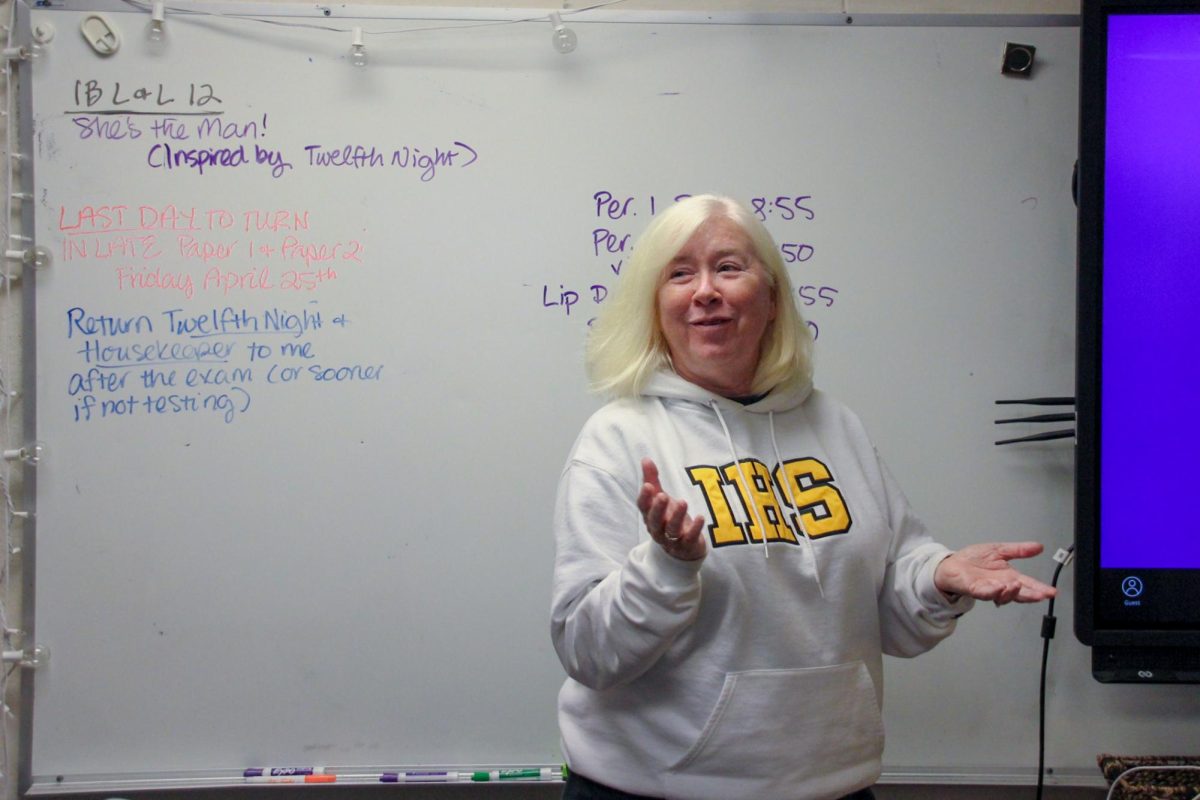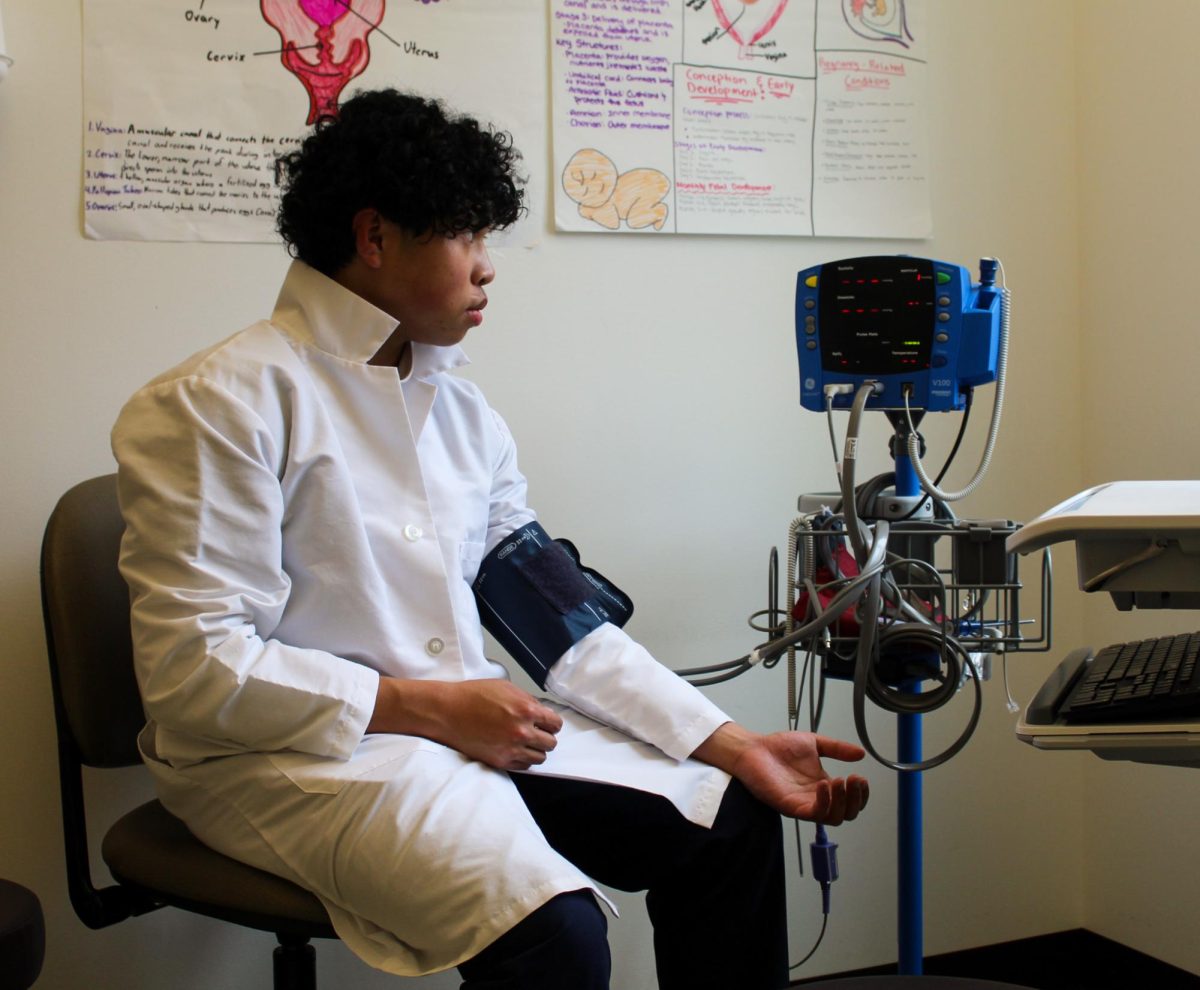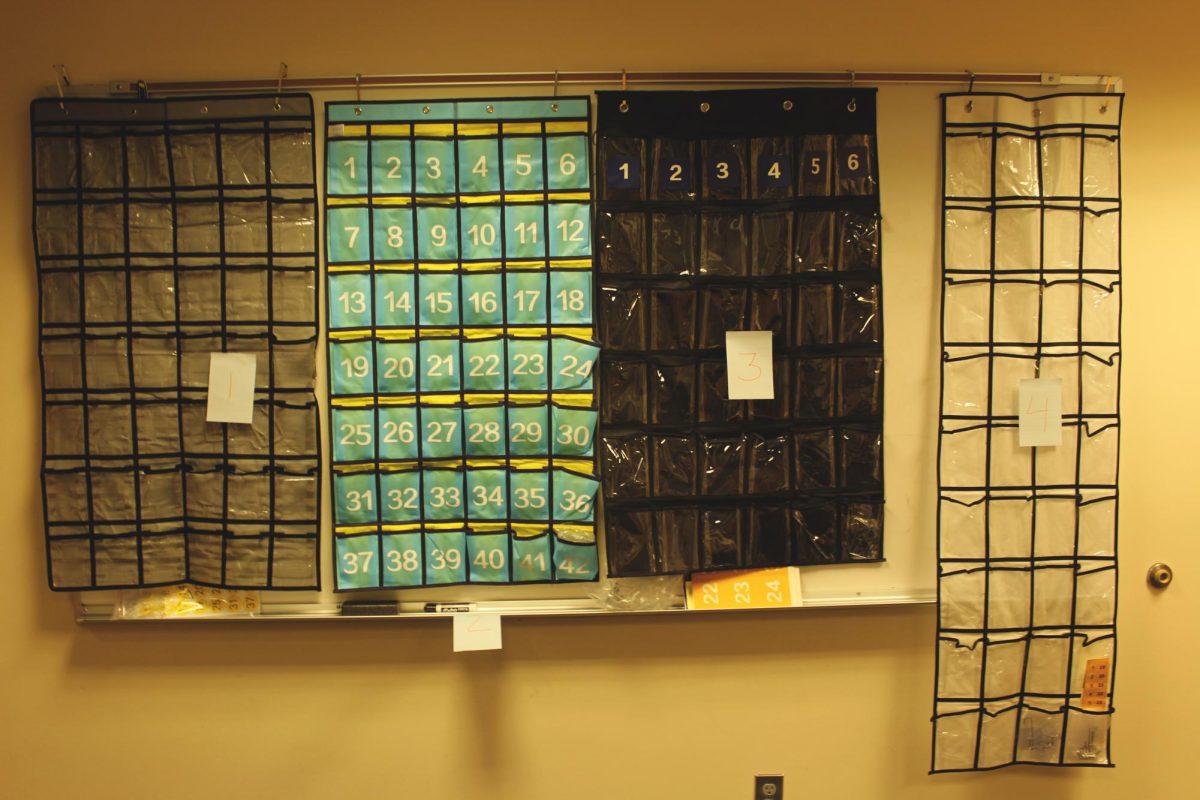District battles budget cuts

Revision as of May 6, 2024: Ric Calhoun is vice president of NSEA, not NEA.
In planning for the 2024-25 school year, NSD is making budget cuts to accommodate a remarkable $26 million budget deficit. This is partially due to Washington’s continued underfunding of public education. NSD superintendent Michael Tolley (he/him) said that nationwide inflation has caused the government to cut down on education funds and that the district has been experiencing slight reductions consistently for the past few years. The shortfall is also a product of district overspending during the COVID-19 pandemic, which caused the district to increase the number of staff hired and the funding for special education.
Budget restrictions are going to impact several programs throughout the district. ASB Executive Treasurer Emma Oleynikova (she/her) said ASB wasn’t involved in deciding which programs were changed.
“I did hear from one of the budget meetings that they did have a lot of students speak there. There was one or two elementary or middle schools that had 30 kids and parents talk about how they needed their certain program,” Oleynikova said.
Tolley, along with several other members of the district finance team, makes the executive decisions about NSD’s budget.
Deputy Superintendent and Chief Financial Officer JoLynn Burge (she/her) said that the budget cuts aren’t just an NSD issue; many of the districts in the greater Seattle area are facing funding issues.
“You probably read about Bellevue having the closed school conversation, Seattle’s having huge problems, Edmonds’s making cuts,” Burge said. “Northshore has done a great job partnering with their labor partners to get out in front of it and try to save the most jobs possible. I think that we had a big problem. And I’m really proud of how we went about making those reductions, because it really did save jobs.”
While the overall impact of budget cuts on NSD’s academic program remains uncertain, there have been various changes already confirmed. Currently, the most significant reduction being implemented for the 2024-25 school year is a decrease in staffing, which increases class sizes at Inglemoor.
“We understand the vast majority of our budget is paying for staff,” Tolley said. “There was no way to reduce $26 million out of our budget without reducing a big part of our staff.”
Principal Adam Desautels (he/him) said that due to the staffing cuts, the average high school class size will increase from the current 25-30 students to up to 40 students. This change will lead to less variety of classes offered, and more difficulty for students to take their desired classes.
“We have some classes that run in the 20s, like 18 to 25 students. We’re not going to have the luxury of running those anymore,” Desautels said.
Desautels also said that larger class sizes could have a negative impact on the classroom environment.
“Think about when you go into a classroom and there’s 25 versus when there’s 39 students in there. Think about how differently that feels. When it’s big and crowded, it feels a little more stressful, maybe a little bit more anxious,” Desautels said.
Increased class sizes may also impact teachers’ ability to assist and connect with students, Desautels said. He said that teachers may have to resort to seeking time outside of class to meet with students one-on-one to effectively give them feedback and support.
“I was an English teacher, and I remember I gave every student feedback on every essay that they wrote during class,” Desautels said. “I don’t know how I would be able to do that with 40 students.”
Tolley said that the implementation of higher class sizes was an unavoidable compromise to maintain other programs. He said that while larger class sizes may have a negative impact on academics, the significance of the impact will vary based on individual perception.
“As we allocate teachers out to schools, rather than doing it say one to 30, it might be one to 32. Does that mean every high school classroom that you sit in is going to have 32 students in it? No, it’s not. You can be a student and for your daily experience, nothing changes,” Tolley said.
In addition, Desautels fears for the loss of staff whose positions are viewed as expendable and the impact this would have on Inglemoor’s community.
“With cuts go people, so the people that run certain clubs or other parts of our community that have been really positive — they’re not going to be there. And we’re going to have to find somebody,” Desautels said.
Desautels said his goal moving into next year is to maintain as much of the school’s current staff as possible. He hopes to create the best possible environment with the available resources, and he said that keeping the current staff is a key factor in achieving this.
“It’s my job to try and mitigate this as best I can, both so that fewer kids are affected and fewer staff are affected. That’s my goal. Inglemoor’s great and the staff is really strong,” Desautels said. “And we’re kind of just a scrappy school. We’ve figured out how to make things work, and we just kind of keep our head down to take the noise from outside away. And we’re just gonna keep doing that. Take care of us.”
Although general feedback from the community regarding special education program cuts has been negative, Assistant Superintendent of Human Resources and Special Education Obadiah Dunham (he/him) said that the proposed changes for special education have been misinterpreted. The board is still in the middle of the process for cuts to special education and nothing has been finalized.
“Everybody’s worried that their things are going to be cut, and everybody’s really just watching. When we do a process like our staffing process, people suddenly think, ‘Oh, my thing has been cut,’ not realizing there’s a lot of steps to this process,” Dunham said.
Inglemoor’s campus supervisor Ric Calhoun (he/him) is also vice president of the Northshore Education Association, or NSEA, the union for certified and classified staff. As of April 4, he said that four special education teachers at Inglemoor were told they may not have a job next school year. Special education teacher Sean Bills (he/him) said that a lot of special education students rely on paraeducators, which are classroom assistants who provide support for students in different classes. But if the students don’t have the paraeducators, then they’ll be placed in general education classes with minimal support.
“They’re going to be on their own right now. We have so many wonderful educators who are out there helping the work, making adjustments on the fly, so the students can be successful,” Bills said.
Calhoun said that the divide in communication between the district and its community has caused distrust from both sides. While the NSEA initially ratified their contract with expected cuts to special education, the district told them to reopen the contract a few weeks later, adding a $15 million reduction to the fund.
“It’s hard to have trust with people. I just promised you that we can have this deal. And then I come back and go, ‘Wait, we’re not going to have this deal. And we’re going to ask you for $15 million more,’” Calhoun said. “For a lot of us, when they’re saying ‘Oh well, we’re not going to cut any more there,’ we’re all a little bit gun-shy because it feels like we haven’t been listened to, and it feels like it’s just hard to trust.”
Bills said that advocating to the union or to district representatives has been key. He said the best way to prevent reductions to special education is to demonstrate the successes of programs such as the co-taught classes that include both a general education and a special education teacher. While fulfilling the minimum number of teachers per student technically fulfills the requirements, Calhoun said that some students require more help than others.
“We’re not trying to look for the bare minimum. We’re trying to do what’s best for our students. And so I think that’s where the contention is,” Calhoun said. “The district has claimed that they are still looking at the numbers. The numbers aren’t final, that everyone shouldn’t panic, but part of the process is different than it has been in the past.”
NSD’s budget shortfall is also imposing cuts to extracurricular programs across the district. Several district staff members have expressed concern for the possibility of limited opportunities for students to be involved in extracurricular activities. These cuts include the removal of all fifth grade music programs, which are free music classes for students.
Northshore Middle School music teacher Rob Barnes (he/him) said that the removal of the fifth grade music program was a negotiation placed on the union to relieve the district of some debt. Barnes was a teacher for the fifth grade program at NMS for five years before becoming the head band teacher. He said that the program loss may be detrimental for younger students that will not be able to experiment with music before entering middle school.
“Teachers in the classroom are going to do everything they possibly can to try to make sure that (students) have that opportunity,” Barnes said. “Now, it’s just going to have to be in the sixth grade rather than in the fifth grade.”
Although NMS does have sixth, seventh and eighth grade music classes, the loss of the fifth grade program may impact a student’s ability to perform at higher grade levels. Barnes said that even though this was a hurdle thrown at the music board, there shouldn’t be significant impacts as long as teachers provide enough guidance to students.
“I am absolutely confident that given the proper support, middle school and high school teachers can exit students from this school district ready for whatever level of playing they want to engage in,” Barnes said.
Inglemoor Music Department head Charlie Fix (he/him) said that losing the elementary school program will be impactful especially because of the legacy that it has. Fix said that NSD is one of few districts within the region to offer a free fifth-grade music program, which had been running for over 40 years.
Fix said NSD will inevitably need to make cuts to manage the budget shortfall, but losing music opportunities for kids is upsetting. He said it’s crucial that the district continues to support the music program in other ways if it is to remain successful.
“To have the district make decisions that eliminate that program is just disheartening,” Fix said. “But at the same time, I do understand the financial situation that the district is in and that cuts need to be made.”
Negotiations concerning the athletic department budget cuts are ongoing. The confirmed cuts as of Apr. 23 are the reduction of middle school sports, the elimination of elementary sports, the reduction of Athletic Directors’ salaries and the loss of paid days before the school year for the directors to prepare for fall sports. Tolley expressed his support for the continuation of elementary school sports, but said that the cuts were unavoidable in order to maintain other aspects of the community.
“But I agree kids need middle school sports. And so we will have middle school sports but not at the same level we’ve had,” Tolley said.
While no high school sports have been cut, Athletic Director Kealey Stanich (she/her) said she fears for the impact the budget reductions will have on other aspects of Inglemoor’s athletic program.
“Rumors are rumors right now, but I’m afraid. I’m afraid for our C-teams right now. And I’m afraid that we could get some coaches’ stipends taken away,” Stanich said. “Transportation is also an interesting one, so we’ll see if that gets affected. Each school gets a set amount of money each year for their transportation for all activities, and I don’t know what that’ll look like next year.”
Approximately six teams have third or C-teams. While these teams are unranked, Stanich said that C-teams are important to the development of programs.
“The teams that have C-teams — those are really precious to them. They’re building their programs for the future. For some sports, maybe you get on the team with no experience, and it’s kind of just for fun. But for others it is a learning experience,” Stanich said.
Currently, athletes have to pay $200 to play most sports at Inglemoor. In previous years, the cost was only $150, but it was increased this year in response to the budget shortfall.
“That $200 is split in a couple different ways. Some of it goes to pay for the building you play in, and some of it goes into a big pot that the district helps pay for athletic trainers, coaches stipends, athletic trainings and anything like that,” Stanich said.
Stanich said that in addition to this payment, the athletic department receives one-third of all proceeds from ASB card sales, while the other two-thirds goes directly to ASB. She said that going forward, she’ll have to rely on this money to provide transportation for teams, instead of district money, which would hurt the quality of Inglemoor’s athletics.
“This has happened before, when transportation was on ASB athletic money, and that cost around $60,000. I don’t have that extra money, so it could happen where it falls on ASB money, but I just don’t know right now,” Stanich said.
With the threat of further cuts looming, Stanich said her goal is to improve Inglemoor’s athletics to the best of her ability with the available resources. However, she said that particularly with the rumored removal of C-teams, it’s going to be an uphill battle.
“I think we’re gonna be okay for the next year, if things kind of stay in place,” Stanich said. “The main things that could affect us are our C-teams being cut or only being allowed to have two, or issues with transportation. And that will make our athletics go downhill,” Stanich said. “I’m trying to build, not break back down. And I’m working really hard to build this athletic department back up.”



















